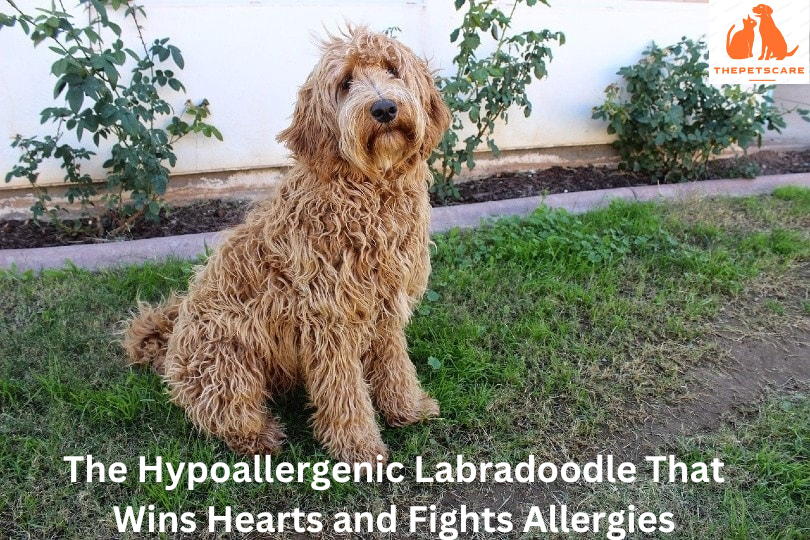For centuries, dogs are beloved companions who bring joy, love, and loyalty to many families. For some, however, allergies prevent them from owning a pet dog. There is a solution, however: the Labradoodle. This hybrid dog has become popular as a hypoallergenic breed, which makes it an ideal choice for people with allergies. This comprehensive article will examine the Labradoodle’s origins and characteristics, as well as its temperament, grooming requirements, and dispel the myth that hypoallergenic dogs are a good choice for allergy sufferers. You will learn why Labradoodles can be both allergy-friendly and a bundle of love.
Section 1: Origins of the Labradoodle
The Labradoodle was developed at the end of the 20th century as a cross between the Labrador Retriever (the Lab) and the Poodle. This hybrid was created to combine the friendly, intelligent, and trainable nature of the Labrador Retriever with the hypoallergenic coats of the Poodle. In the 1980s the first Labradoodle was bred in Australia, attracting dog lovers around the globe.
Understanding Hypoallergenic dogs
It is important to understand what “hypoallergenic”, in the context of dogs, means. Some breeds are less allergenic than others, but no dog breed is completely hypoallergenic. Allergies in dogs are often triggered by the proteins in their saliva, urine, and dander. These proteins can cause sneezing and itching in people who are sensitive. These hypoallergenic breeds produce fewer allergens and reduce the risk of allergic reactions.
Labradoodles are hypoallergenic.
Labradoodles inherit hypoallergenic qualities from their Poodle ancestry. Poodles are known for their unique coat, which sheds less and produces less dander than most other breeds. The Labradoodle has a wavy or curly coat that reduces allergens in the air. Individuals with mild or moderate allergies will likely be more compatible with Labradoodles than with non-hypoallergenic dogs.
Section 4: Labradoodle varieties and allergenic potential
Not all Labradoodles will be hypoallergenic. Understanding the generations of Labradoodles is important when considering adoption. Labradoodles are classified into three categories:
First-generation Labradoodles (F1): These are direct crossbreeds between a Labrador dog and a Poodle. These Labradoodles may still have allergenic genes on the Labrador side. This makes them less hypoallergenic than later generations.
b) Second generation (F2) Labradoodles. F2 Labradoodles are the result of breeding two F1 Labradoodles. They can have a different hypoallergenic ability, since they may inherit more Poodle characteristics, which reduces allergenic potential.
They are more likely to be hypoallergenic if they are multigenerational Labradoodles (F3 or beyond). These Labradoodles are the result of further breeding between Labradoodles, or multigenerational Labradoodles. The hypoallergenic properties tend to increase with each subsequent generation.
Labradoodle Temperament & Family-Friendly Character
Labradoodles have a wonderful temperament, in addition to their hypoallergenic properties. Labradoodles are excellent family pets because they combine the affectionate nature and intelligence of Labradors along with the loyalty and intelligence of Poodles. They are friendly and gentle. They can adapt to a variety of living situations including those with children or pets. The Labradoodle is known for its high energy level and thrives in an environment that offers plenty of playtime and exercise.
Labradoodles: Section 6: Grooming needs
The Labradoodle’s hypoallergenic hair does need to be brushed regularly in order to avoid matting and tangles. The amount of maintenance required depends on the coat type. Dogs with curlier or wavy hair will require less grooming. Regular brushing removes loose fur and dander from the dog’s coat, reducing the allergens that are present in their environment. Regular grooming also keeps the Labradoodle’s coat healthy and clean, which contributes to their overall health.
The Myth of Hypoallergenic Dogs
It is important to note that while Labradoodles may be considered hypoallergenic it is still true that no dog breed can be completely allergen-free. Allergy reactions can vary greatly from person to person. While some people may experience relief when they adopt hypoallergenic dogs, others may continue to have symptoms. It is important to test a Labradoodle on someone with severe allergies before making a purchase decision.
The Labradoodle is a hybrid dog breed that’s unique, and captivating, and offers a solution to allergy sufferers. They are a great choice for families looking for a four-legged friend because of their hypoallergenic traits, friendly nature, and loving disposition. The joy and affection Labradoodles provide to their families is worth the grooming. Consider bringing a Labradoodle home if allergies are keeping you from having your own dog. They might capture your heart, and even defy your allergies.


